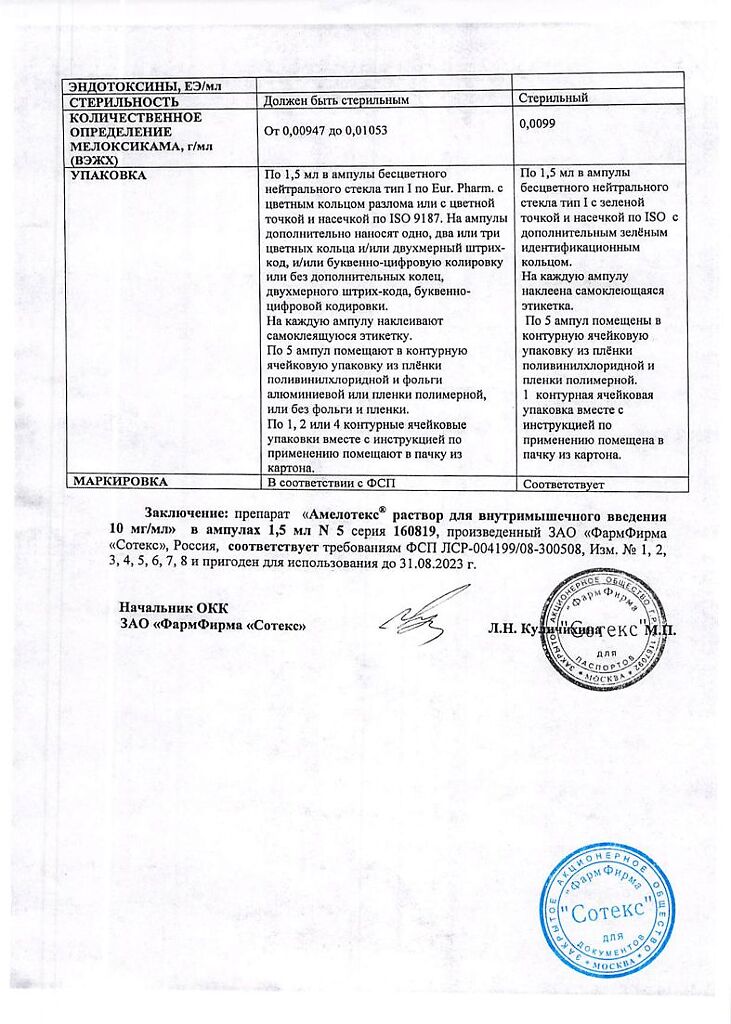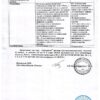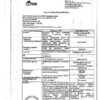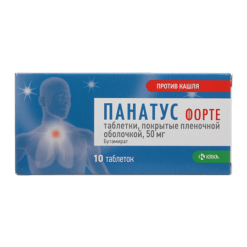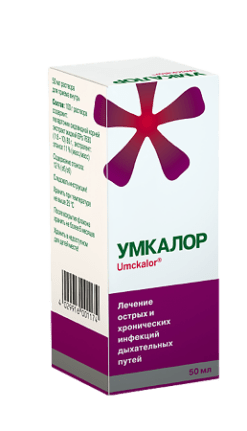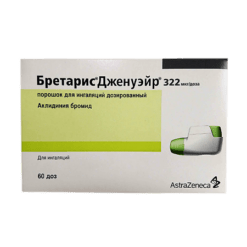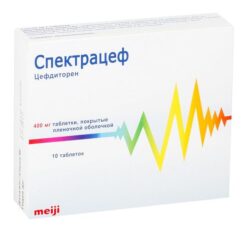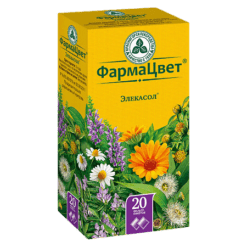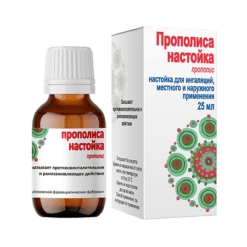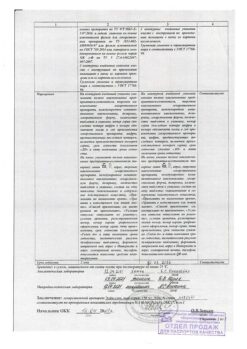No products in the cart.
Budesonide-Nativ, 0.25 mg/ml 2 ml 10 pcs
€1.00
Out of stock
(E-mail when Stock is available)
Description
Budesonide-Nativ is a synthetic glucocorticosteroid (GCS) for local use, has anti-inflammatory, anti-allergic and immunosuppressive effects. It increases the production of lipomodulin, which is an inhibitor of phospholipase A, inhibits the release of arachidonic acid, inhibits the synthesis of products of arachidonic acid metabolism – cyclic endoperoxides and prostaglandins (Pg). It prevents marginal accumulation of neutrophils, decreases inflammatory exudation and cytokine production, inhibits macrophage migration, decreases intensification of infiltration processes and formation of chemotaxis substance, inhibits release of inflammatory mediators from mast cells.
It increases the number of “active” beta-adrenoreceptors, restores the bronchial response to bronchodilators, allowing us to reduce the frequency of their use, reduces swelling of the bronchial mucosa, mucus production, sputum formation and reduces airway hyperresponsiveness. It improves mucociliary transport. It is well tolerated during long-term treatment, has no mineralocorticosteroid activity and practically does not have a systemic effect in the recommended doses.
Therapeutic effect begins several hours after inhalation. The maximum therapeutic effect develops only a few days after administration of therapeutic doses of inhaled budesonide, on average 5-7 days.
Inhalation of budesonide can prevent an attack of bronchial asthma, but does not relieve acute bronchospasm.
Pharmacokinetics
Absorption is low. After inhalation, 20-25% reaches the small bronchi, part of the dose entering the gastrointestinal tract (GIT) is absorbed and almost completely (90%) undergoes biotransformation in the liver to inactive metabolites. Systemic bioavailability of budesonide is 38% of the administered dose, and 1/6 of this value is formed by swallowing part of the drug. The time of onset of maximum plasma concentration is 15-45 minutes after inhalation administration. The binding to plasma proteins is 88%. The volume of budesonide distribution is about 3 l/kg. It has high systemic clearance – 84 l/h. The elimination half-life is ~ 2.8 hours, maximum plasma concentration is 0.01 mmol/l. It is excreted through the intestine as metabolites – 10%, by the kidneys – 70%.
Indications
Indications
Bronchial asthma (BA), requiring maintenance therapy with GCS; chronic obstructive pulmonary disease (COPD).
Pharmacological effect
Pharmacological effect
Budesonide-Nativ is a synthetic glucocorticosteroid (GCS) for topical use, has anti-inflammatory, antiallergic and immunosuppressive effects. Increases the production of lipomodulin, which is an inhibitor of phospholipase A, inhibits the release of arachidonic acid, inhibits the synthesis of arachidonic acid metabolic products – cyclic endoperoxides and prostaglandins (Pg). Prevents the marginal accumulation of neutrophils, reduces inflammatory exudation and the production of cytokines, inhibits the migration of macrophages, reduces the intensity of infiltration processes, the formation of a chemotaxis substance, and inhibits the release of inflammatory mediators from mast cells.
Increases the number of “active” beta-adrenergic receptors, restores the bronchial response to bronchodilators, allowing to reduce the frequency of their use, reduces swelling of the bronchial mucosa, mucus production, sputum formation and reduces airway hyperreactivity. Improves mucociliary transport. It is well tolerated during long-term treatment, does not have mineralocorticosteroid activity, and in recommended doses has virtually no systemic effects.
The therapeutic effect begins a few hours after inhalation. The maximum therapeutic effect develops only a few days after the administration of therapeutic doses of inhaled budesonide, on average after 5-7 days.
Inhalation of budesonide can prevent an attack of bronchial asthma, but does not relieve acute bronchospasm.
Pharmacokinetics
Absorption is low. After inhalation, 20-25% reaches the small bronchi, part of the dose entering the gastrointestinal tract (GIT) is absorbed and almost completely (90%) undergoes biotransformation in the liver to inactive metabolites. The systemic bioavailability of budesonide is 38% of the dose taken, with 1/6 of this value formed due to ingestion of part of the drug. The time for maximum concentration in blood plasma is 15-45 minutes after inhalation administration. Communication with plasma proteins – 88%. The volume of distribution of budesonide is approximately 3 l/kg. It has a high systemic clearance – 84 l/h. The half-life is ~ 2.8 hours, the maximum concentration in blood plasma is 0.01 mmol/l. Excreted through the intestines in the form of metabolites – 10%, by the kidneys – 70%.
Special instructions
Special instructions
Budesonide native is not intended for the relief of acute symptoms of asthma and COPD. The instructions for use of the inhaler should be strictly followed. Avoid getting the drug in your eyes. After using the drug, it is recommended to rinse your mouth with water to reduce the risk of candidal stomatitis.
When switching from therapy with oral glucocorticosteroids to the drug “Budesonide-native”, the dosage reduction of systemic corticosteroids must be carried out very slowly and in small doses (for example, 2.5 mg of prednisolone). In patients who have been on long-term therapy with systemic corticosteroids, pseudorheumatism syndrome is possible. In these cases, it is sometimes necessary to temporarily increase the dose of oral corticosteroids.
In rare cases, symptoms such as fatigue, headaches, nausea, and vomiting are observed. After complete withdrawal, long-term observation of the patient is recommended (risk of developing adrenal insufficiency), as well as assessment of external respiratory function. The drug “Budesonide-native” can be prescribed to patients who cannot use other dosage forms of inhaled corticosteroids (elderly and senile patients).
The drug does not affect the ability to engage in potentially hazardous activities that require special attention and quick reactions (driving a car and other vehicles, working with moving mechanisms, working as a dispatcher and operator, etc.).
Use only in nebulizers.
Active ingredient
Active ingredient
Budesonide
Composition
Composition
Active ingredient:
Pregnancy
Pregnancy
During pregnancy and lactation, caution should be exercised.
Prescribing the drug is rational if the benefit of its use for the mother outweighs the potential risk for the fetus or child.
There are no data on the excretion of budesonide in breast milk.
Contraindications
Contraindications
Hypersensitivity to the components of the drug, children under 16 years of age.
With caution: active and inactive forms of tuberculosis, fungal, bacterial and viral infections of the respiratory system, pregnancy, lactation.
Side Effects
Side Effects
Common (> 1/100): cough, dry mouth, hoarseness, dysphonia, irritation of the oral and pharyngeal mucosa, candidal stomatitis, dry pharyngeal mucosa, headache, nausea.
Interaction
Interaction
In the treatment of bronchial asthma, Budesonide-native combines well with beta2-adrenergic agonists, cromoglycic acid or nedocromil, methylxanthines and ipratropium bromide. Phenobarbital, phenytoin, rifampicin reduce effectiveness (induction of microsomal liver enzymes).
Methandienone and estrogens increase the concentration of budesonide in the blood plasma. Taking 200 mg of ketoconazole once a day increases the plasma concentration of orally administered budesonide at a dose of 3 mg by an average of 6 times.
When ketoconazole is prescribed 12 hours after taking budesonide, the plasma concentration of the latter increases 3 times. There is no information on such interactions with inhaled dosage forms of budesonide, but a noticeable increase in plasma concentrations of the drug should be expected.
Other potential CYP3A4 inhibitors, such as itraconazole, also significantly increase plasma concentrations of budesonide. The drug can be diluted with 0.9% sodium chloride solution.
Overdose
Overdose
In case of acute overdose, no clinical manifestations occur.
With prolonged use of the drug in doses significantly higher than recommended, a systemic glucocorticosteroid effect may develop in the form of hypercortisolism and suppression of adrenal function.
Recommendations for use
Recommendations for use
The dosage of the drug “Budesonide-native” should be individual. The initial dose in adults for the treatment of asthma and COPD is 1 – 2 mg per day. The dose for maintenance treatment is 0.5 – 4 mg per day. After obtaining the effect, the dose is reduced to the minimum effective dose necessary to maintain a stable condition. In some cases, in patients whose treatment requires achieving a rapid therapeutic effect, the dose of the drug may be increased.
If the patient took GCS orally, transfer to treatment with Budesonide-native must be carried out when the patient’s health is stable; inhalation and oral GCS are combined for 10 to 14 days. For 10 days, it is recommended to take high doses of Budesonide-native while taking oral glucocorticosteroids in a selected dose. Subsequently, the dose of oral glucocorticosteroids should be gradually reduced (for example, 2.5 mg prednisolone) to the lowest possible level. In many cases, it is possible to completely stop taking oral glucocorticosteroids.
There are no data on the use of budesonide in patients with renal failure or impaired liver function. Since budesonide is eliminated through biotransformation in the liver, an increase in the duration of action of the drug can be expected in patients with severe liver cirrhosis.
Children over 16 years of age: initial dose 0.25-0.5 mg/day. If necessary, the dose can be increased to 1 mg/day. The maintenance dose is 0.25-2 mg/day.
When prescribed to patients with liver cirrhosis, more careful monitoring is required.
The drug is administered using a nebulizer. The bottle contains 1 single dose.
Instructions for use
Open the bottle with the drug. Fill the nebulizer through the top opening with the required amount of the drug. Perform nebulization in accordance with the instructions for the type of nebulizer used.
The volume of budesonide solution delivered to the patient’s lungs by nebulizer is variable and depends on several factors, including the following:
Inhalation time
Chamber filling level
Technical characteristics of the nebulizer
Relationship between inspiratory/expiratory volume and patient tidal volume
Using a mouthpiece or mask
Note
After each inhalation, rinse your mouth with water.
If you use a mask, make sure that the mask fits snugly against your face when inhaling. After inhalation, wash your face.
Cleaning
The nebulizer chamber should be cleaned after each use.
Wash the nebulizer chamber and mouthpiece or mask with warm water, using a mild detergent, or according to the manufacturer’s instructions.
Storage conditions
Storage conditions
In a dry place, protected from light, out of reach of children, at a temperature not exceeding 25°C.
Shelf life
Shelf life
3 years.
Manufacturer
Manufacturer
Nativa, Russia
Additional information
| Shelf life | 3 years. |
|---|---|
| Conditions of storage | In a dry place out of the reach of children at a temperature not exceeding 25 ° C. |
| Manufacturer | Nativa, Russia |
| Medication form | solution for inhalation |
| Brand | Nativa |
Related products
Buy Budesonide-Nativ, 0.25 mg/ml 2 ml 10 pcs with delivery to USA, UK, Europe and over 120 other countries.


